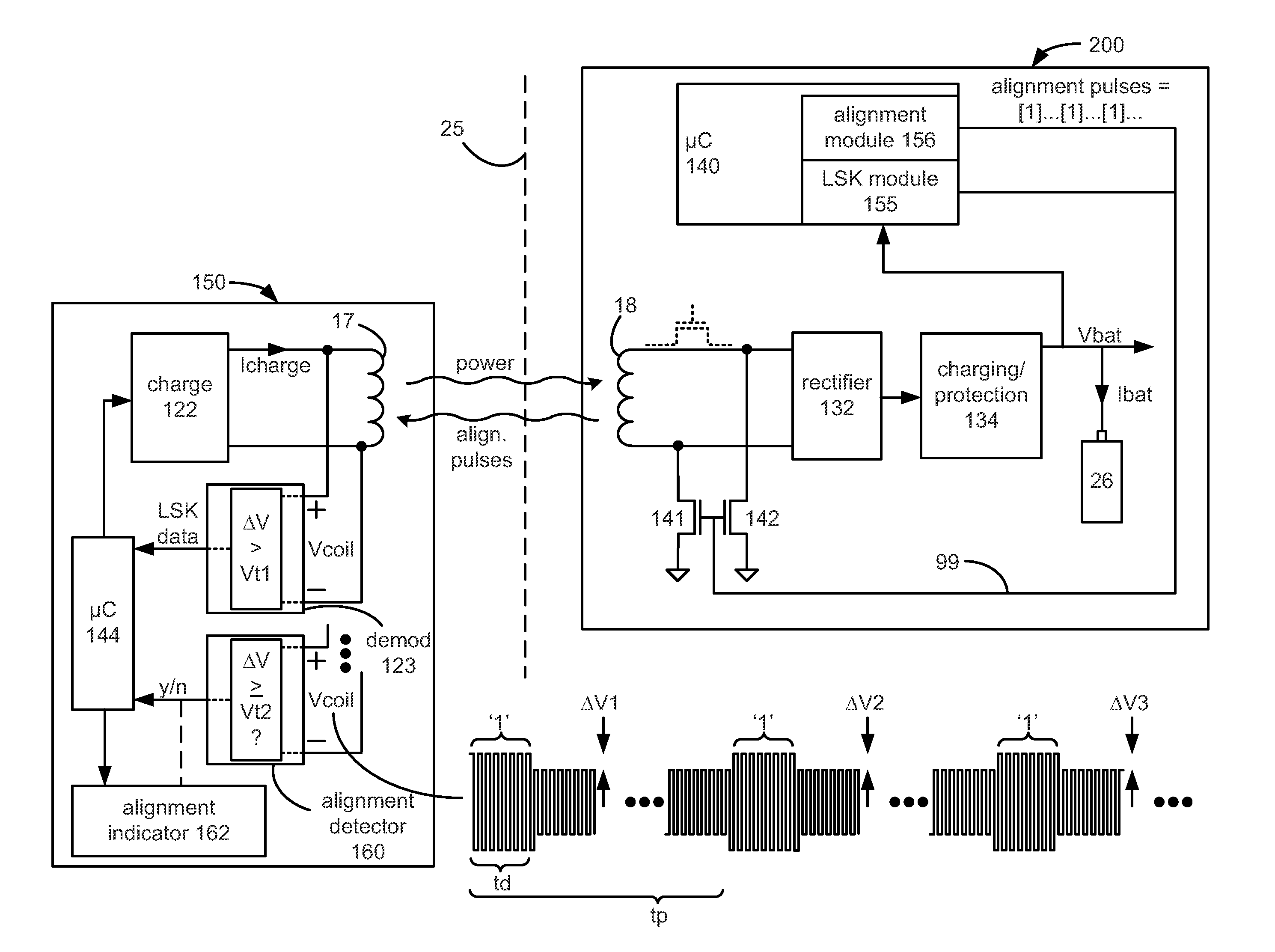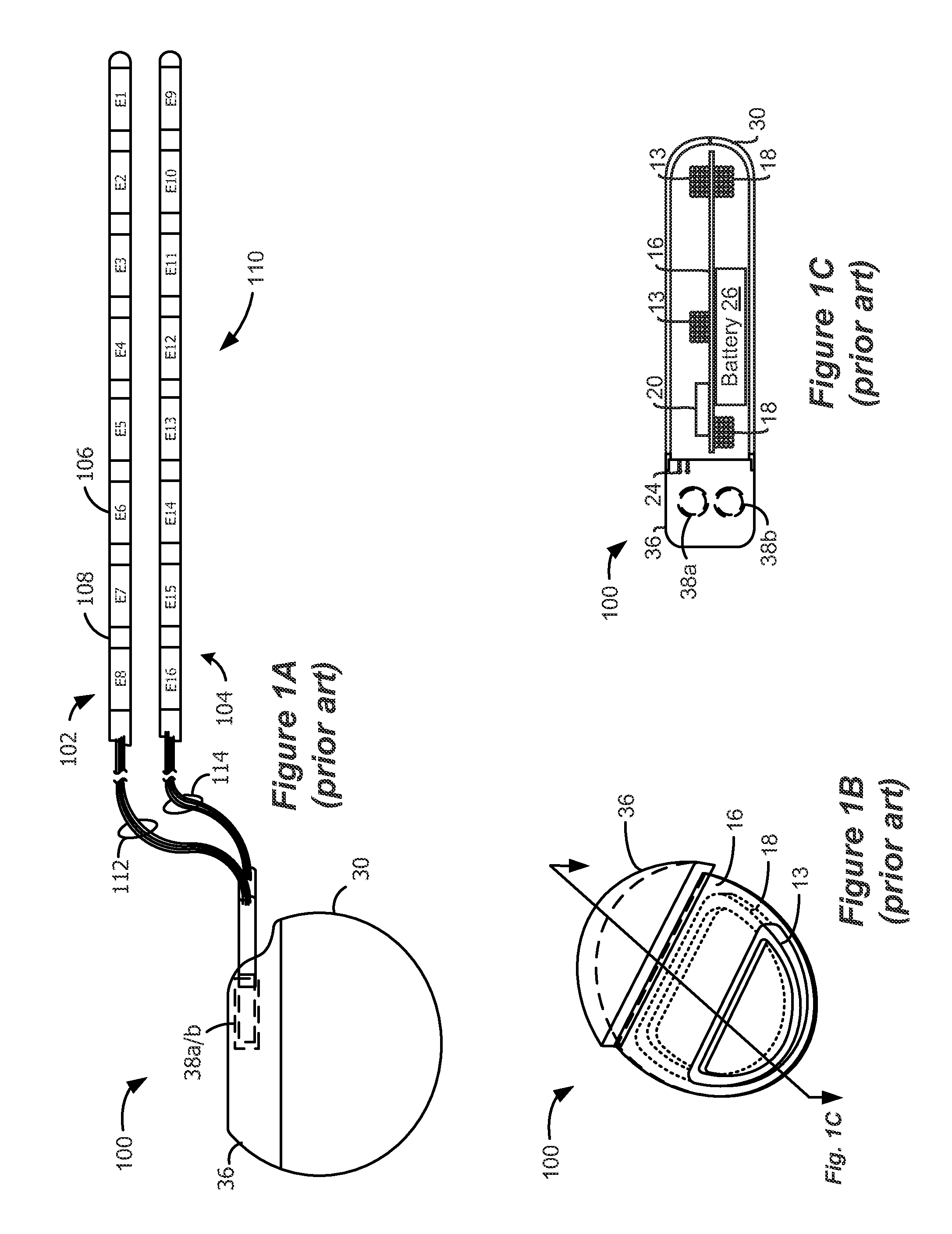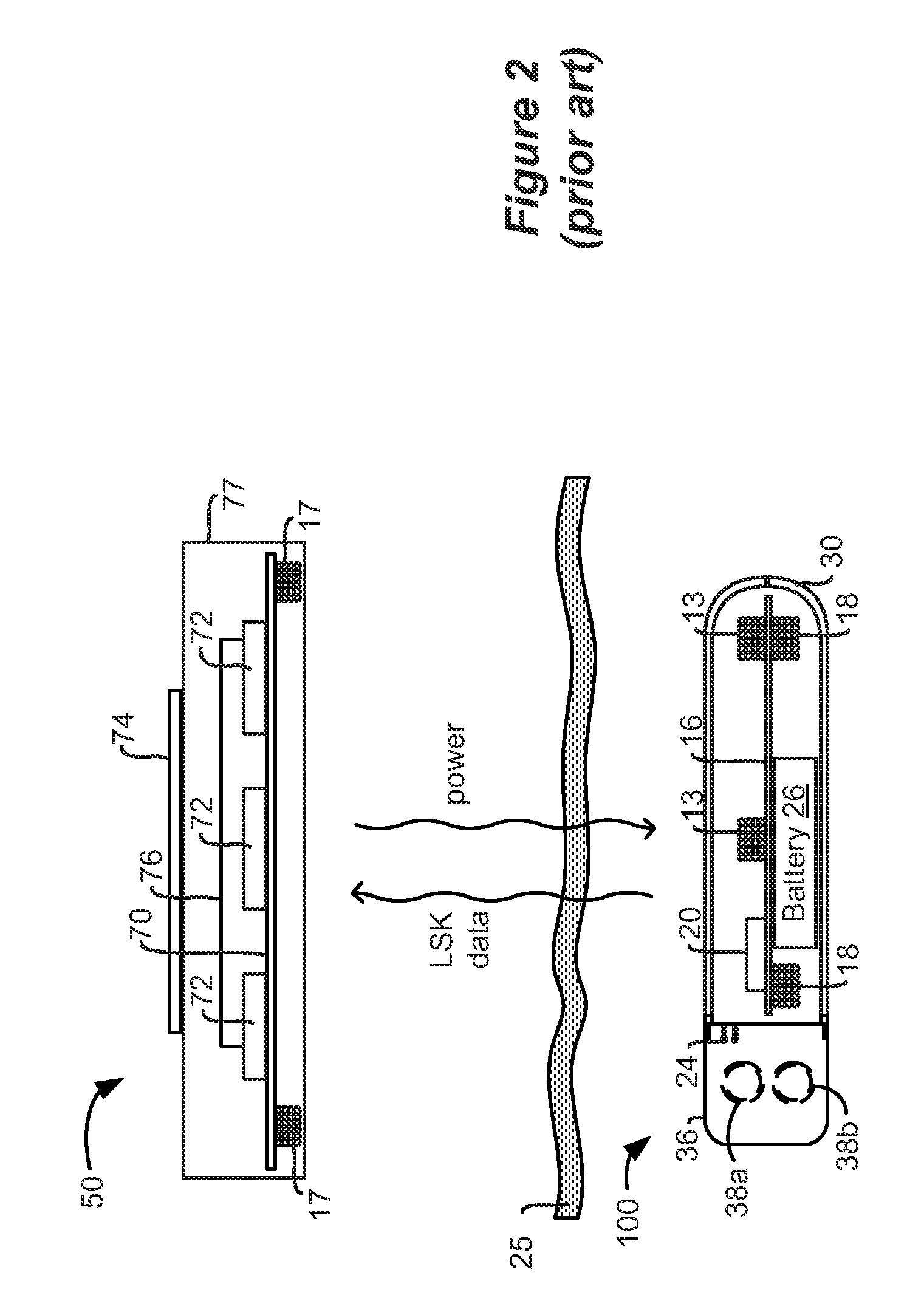Charger Alignment in an Implantable Medical Device System Employing Reflected Impedance Modulation
a technology of impedance modulation and charger, which is applied in the field of wireless external chargers for use in implantable medical device systems, can solve the problems of poor coupling, external charger b>50/b> to heat up, and possibly burn or injure the patient, and non-idealities cannot be avoided
- Summary
- Abstract
- Description
- Claims
- Application Information
AI Technical Summary
Benefits of technology
Problems solved by technology
Method used
Image
Examples
Embodiment Construction
[0030]The description that follows relates to use of the invention within a spinal cord stimulation (SCS) system. However, it is to be understood that the invention is not so limited, and could be used with any type of implantable medical device system.
[0031]The disclosed means of determining alignment between an external charger and an implantable medical device such as an IPG involves the use of reflected impedance modulation, i.e., by measuring at the external charger reflections arising from modulating the impedance of the charging coil in the IPG. Reflected impedance modulation has been used in legacy systems to enable Load Shift keying (LSK) telemetry to send data to the external charger to control charging, as discussed in the Background. However, the alignment detection method of this disclosure doesn't involve data transmission, although some of the same LSK hardware can be used. During charging, the charging coil in the IPG is periodically pulsed to modulate its impedance....
PUM
 Login to View More
Login to View More Abstract
Description
Claims
Application Information
 Login to View More
Login to View More - R&D
- Intellectual Property
- Life Sciences
- Materials
- Tech Scout
- Unparalleled Data Quality
- Higher Quality Content
- 60% Fewer Hallucinations
Browse by: Latest US Patents, China's latest patents, Technical Efficacy Thesaurus, Application Domain, Technology Topic, Popular Technical Reports.
© 2025 PatSnap. All rights reserved.Legal|Privacy policy|Modern Slavery Act Transparency Statement|Sitemap|About US| Contact US: help@patsnap.com



